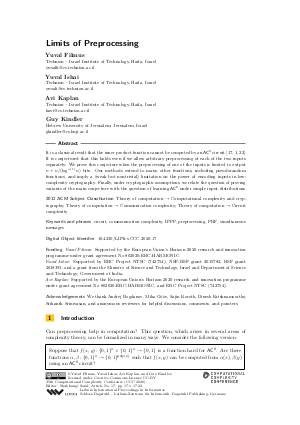LIPIcs.CCC.2020.17.pdf
- Filesize: 0.57 MB
- 22 pages

 Creative Commons Attribution 3.0 Unported license
Creative Commons Attribution 3.0 Unported license





Feedback for Dagstuhl Publishing